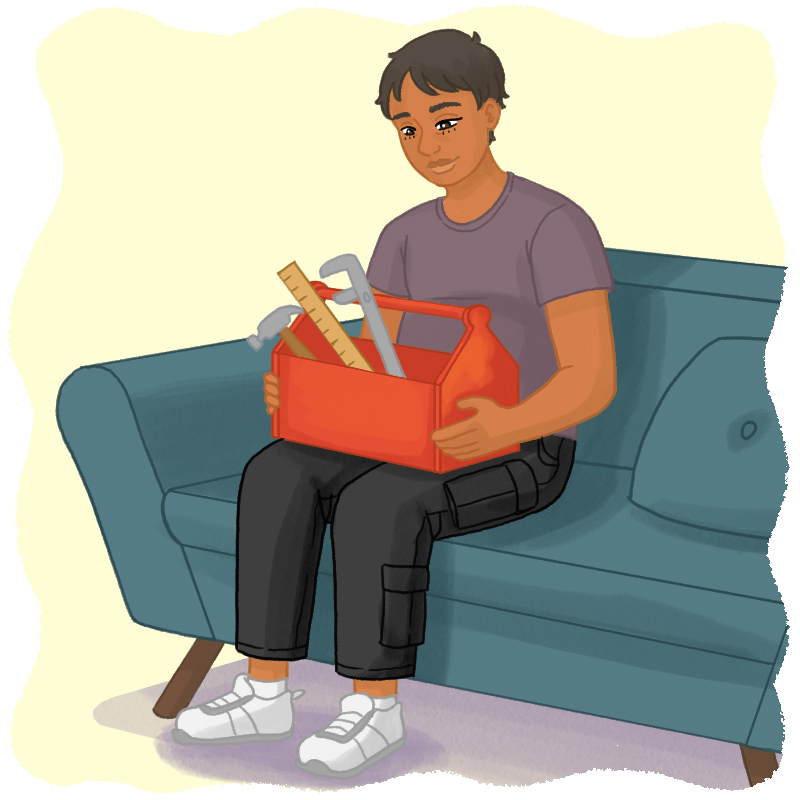





Chapter 1. Coping Tools Copy

Nelson stands in the doorway silently, eyes alert and fists lightly clenched.
“Hello, Nelson,” you greet warmly. “Won’t you have a seat?”
He smiles and unclenches his fists, but does not say anything. He plops on the chair opposite you, then immediately slouches and leans his head back.
“How have things been?”
Nelson shrugs. “I don’t know. My leg still hurts.”
“Do you feel like the pain has been getting worse?”
“No, but it’s so annoying. I wish it would go away.”
“I understand,” you say as you nod sympathetically. “Well, I’m glad you’re here with me today, because I thought we could start building your coping toolbox. Do you remember when we first talked about CCT, or Cue-Centered Therapy?”
Nelson nods, once again not saying anything.
“Well, having a toolbox is a core component to CCT. First I’ll introduce some tools. We’ll see if there are any you’re using already, even if you don’t realize it, and we’ll practice them a little. Then I’m going to assign you a few to practice at home. How does that sound?”
Nelson furrows his brow, uncertain about what he’s hearing. “What if the tools don’t work? I mean, nothing works for me.”
“I encourage you to really give these tools a try, even if you’ve already tried one before, and test them out the way I teach them.”
Nelson chews his lips and drops his gaze, almost as if he is disappointed.
You continue, but raise the pitch of your voice to sound more reassuring. “If you give it your best shot, and they still don’t have any effect on you, then maybe those specific ones aren’t the tools for you, and together we’ll find something that works better for you.”
He hasn’t budged.
“I’m confident that at least one of them will work for you,” you conclude with a smile, “if you give it a chance.”
“Well, how do the coping tools work?” Nelson asks, still without moving.
“Do you remember the square I showed you last time?” you ask as you pull out an illustrated sheet of paper. “With the four corners affected by trauma?”
Nelson lifts his gaze to meet your eyes.
“Our feelings, our thoughts, our physical reactions, our behaviors,” you explain as you point to each corresponding corner on the square. “The coping tools I’m going to teach you will help you manage these.”
“But,” Nelson wrinkles his brow, “how will I know when to use them?”
You place the paper in your lap to fully direct your focus on Nelson. “For now, you should practice them daily—once or twice a day—so you can get very comfortable with the tools that work for you. Then, anytime you’re feeling overwhelmed or you begin to notice stress symptoms in any of these four corners—like if you get a headache, or you start imagining the worst is going to happen, or you feel scared—you can use these tools to manage your distress.”
Nelson remains still, but seems mildly placated. “How do we get started?”
